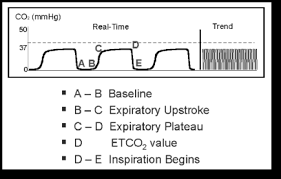end tidal co2 monitoring cpr
After 20 minutes of CPR death occurs if ETCO2 is consistently below 10 mmHg with 100 sensitivity and specificity 15. Why Is End Tidal CO2 Important.

The Role Of Etco2 In Termination Of Resuscitation Jems Ems Emergency Medical Services Training Paramedic Emt News
End-tidal carbon dioxide ETCO2 has been shown to correlate with coronary perfusion pressure CPP during CPR and has been proposed as a useful noninvasive monitor of CPR efficacy.
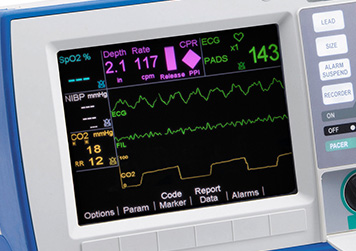
. Waveform capnography can be attached to the BVM prior to intubation to monitor the effectiveness of CPR. In the awake adult normal cardiac index lies between 25-4 Lminm2 with an ETCO2 of 35-45 mmHg. Two very practical uses of waveform capnography in CPR are.
High quality CPR consistent waveform and end-tidal CO2 20 kPa. 10 to 20 mmHg during CPR was strongly associated with ROSC while persistent EtCO2 below 10 to 20 mmHg after 20 minutes of CPR had a 05 likelihood of ROSC. NaHC03 will increase EtCO2 because it splits into CO2 and H20 So if rises after NaHCO3 do not misinterpret as ROSC.
Learn vocabulary terms and more with flashcards games and other study tools. Monitoring end-tidal CO 2 ET-CO 2 provides instantaneous information about. In a mechanically ventilated porcine preparation of ventricular fibrillation onset of fibrillation was associated with a rapid decrease in ETCO2 from 40 - 02 to.
End-tidal carbon dioxide ETco 2 monitoring provides valuable information about CO 2 production and clearance ventilation. The end-tidal carbon dioxide CO2 concentration has been found to correlate with cardiac output during and after cardiopulmonary resuscitation CPR in animal models. A real time waveform record of the concentration of carbon dioxide in the respiratory gases 2.
The effects of therapeutic epinephrine dosing on ETCO2 and CPP in six dogs were examined. Normal ETCO2 in the adult patient should be 35-45 mmHg. You must be signed in to purchase classes.
Increased CO during CPR. The height of the CO 2 waveform during CPR which is a function of cardiac output during chest compression should be monitored and every effort should be made to achieve PETCO 2 values of at least 20 mmHg. Here are five things you should know about waveform capnography in cardiac arrest.
End tidal CO2 ETCO2 monitoring with wave form capnography serves various ACLS-related purposes. Also called capnometry or capnography this noninvasive technique provides a breath-by-breath analysis and a continuous recording of ventilatory status. End-tidal carbon dioxide EtCO2 monitoring is recommended for intubated patients at risk of CPA I-A25 EtCO2 correlates well with cardiac output and rapidly drops to zero at CPA onset59 Additional reasons for rapid decreases include9 Leaking anesthetic circuit Airway obstruction Massive pulmonary thromboembolism.
The height of the ETCO2 waveform during CPR has been used as an indirect measure of adequate chest compressions helping those involved in resuscitation monitor the effectiveness of their compressions in real time. The first sign of the return of spontaneous circulation ROSC during CPR is increase in ETCO2 therefore monitoring of ETCO2 provides very useful information to guide treatment during CPR 8-10. Patients to monitor and optimize CPR quality and detect ROSC is.
This will cause a decrease in the ETCO2 end-tidal CO2 and this will be observable on the waveform as well as with the numerical measurement. ETCO2 can be used as a surrogate marker of cardiac output USES Uses during cardiac arrest. 1 evaluating the effectiveness of chest compressions and 2 identification of ROSC.
Start studying End tidal CO2 Monitoring. End-tidal CO2 monitoring is a method of measuring a patients ventilation and can also give cues into cardiac. Gradual fall in ETCO2 suggests compressionist fatigue during CPR - time to change compressionists abrupt increase in ETCO2 suggests ROSC during CPR detectable before pulse check ETCO2 at 20 minutes of CPR is prognostically useful Prognosis.
Waveform plus numerical value. A peak level less than 10 mm Hg may indicate a need to change compressor or ventilator to delive. The normal end-tidal capnography wave form is basically a rounded rectangle.
We monitored end-tidal CO2 values continuously during cardiac resuscitation in 23 humans while ventilation was held constant with a computer-controlled CPR Thumper. ETCO2 is a reliable indicator with a high prognostic value in determining the CPR outcome 11 12. 21 Usually during CPR the cardiac index generated varies from 16 to 19 Lminm 2.
End-Tidal CO2 Monitoring Interpretation. In fact its commonly called the ventilation vital sign. ETCO2 is a reliable indicator with a high prognostic value in determining the CPR outcome 11 12.
This eliminates the need to wait for blood work chest-x-rays and other diagnostic tests. The number is called capnometry which is the partial pressure of CO 2 detected at the end of exhalation ranging between 35 - 45 mm Hg or 40 57 kPa. End-tidal CO2 concentration ETCO2 may serve as a simple noninvasive measurement of the blood flow generated by precordial compression during cardiopulmonary resuscitation CPR.
Loss of ETCO2 may be the first sign that CPR is needed. ETCO 2 CPR Effectiveness Waveform capnography also known as end-tidal carbon dioxide EtCO 2 is a unique tool for evaluating patient metabolism circulation and ventilation. Chest compression provider tiring end-tidal CO2 value diminishes over time.
An end-tidal capnography waveform is a simple graphic measurement of how much CO 2 a person is exhaling. End-tidal CO2 ETCO2 detection requires air movement. This course is designed for nurse clinicians that care for ventilated patients in the ICU emergency medicine or post-anesthesia care unit setting.
The waveform is called capnograph and shows how much CO 2 is present at each phase of the respiratory cycle. Studies have shown that in patients who had ETCO2 of 10 mmHg or less cardiac arrest was associated with death 13 14. End-tidal CO2 monitoring allows for almost immediate information about what is going on with a patient.
End tidal CO 2 monitoring is represented as a number and a graph on a monitor. End-tidal CO2 monitors can give healthcare providers an early warning if a patient is experiencing respiratory distress or going into respiratory failure.

The Impact Of Ventilation Rate On End Tidal Carbon Dioxide Level During Manual Cardiopulmonary Resuscitation Resuscitation
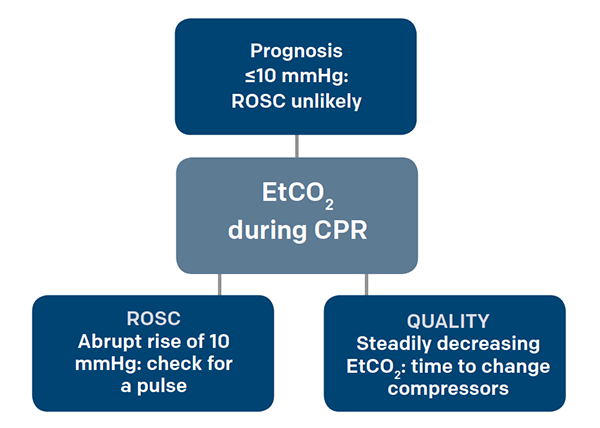
Use End Tidal Capnography For Placing Orogastric Nasogastric Tubes And Cpr Page 2 Of 4 Acep Now Page 2

Waveform Capnography Is A Commonly Used Monitor In The Operating Room And Is Increasingly Seen In Respiratory Therapist Student Icu Nursing Emergency Nursing
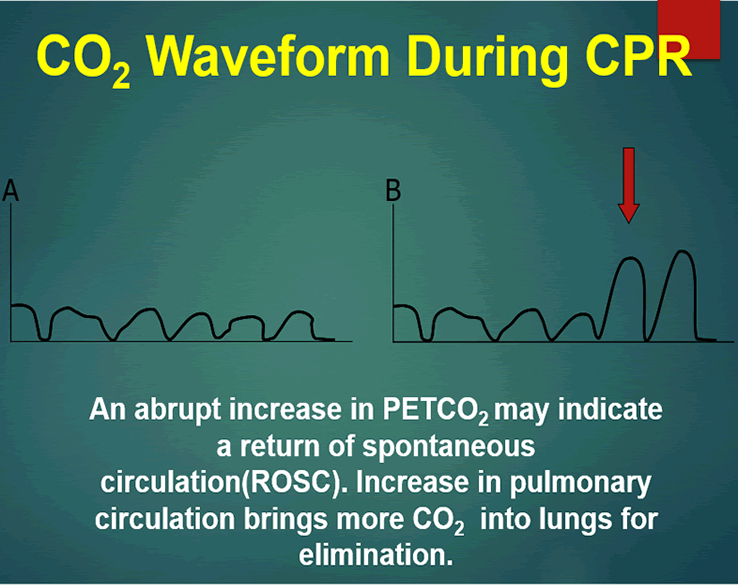
Cpr Mobile Code Stand With Capnograph Capnography

Quantitative Waveform Capnography Acls Medical Training

M Velia Antonini Twitterren Etco2 To Evaluate Cpr Quality To Achieve Good Outcome Monitor Resuscitation Quality Is High Chest Compressions Fraction Short Cc Pauses Deep Enough Cc But Also Where Where You

Capnography During Cardiopulmonary Resuscitation Current Evidence And Future Directions
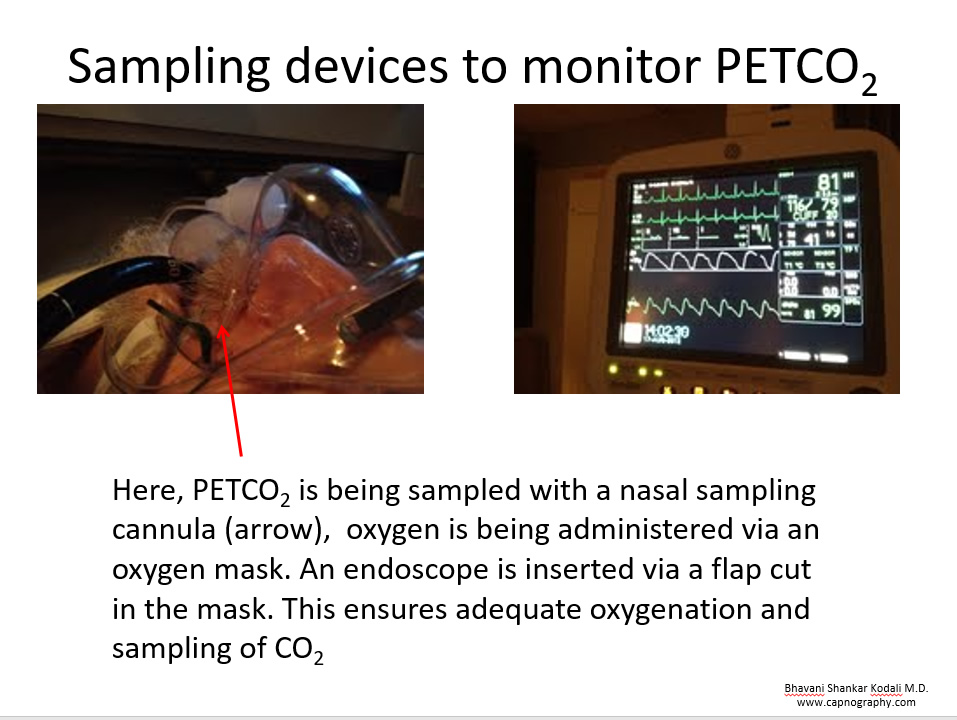
Challenges Of Capnography During Sedation Capnography

Etco2 Valuable Vital Sign To Assess Perfusion The Airway Jedi

Pv Card Continuous End Tidal Co2 Monitoring In Cardiac Arrest

End Tidal Co2 Etco2 Capnography For R Series Zoll Medical

Nonin Respsense Ii Etco2 Monitor Respiratory Monitoring

Etco2 Valuable Vital Sign To Assess Perfusion The Airway Jedi
Effectiveness Of Cpr And Prognosis In Cardiac Arrest Capnography Training
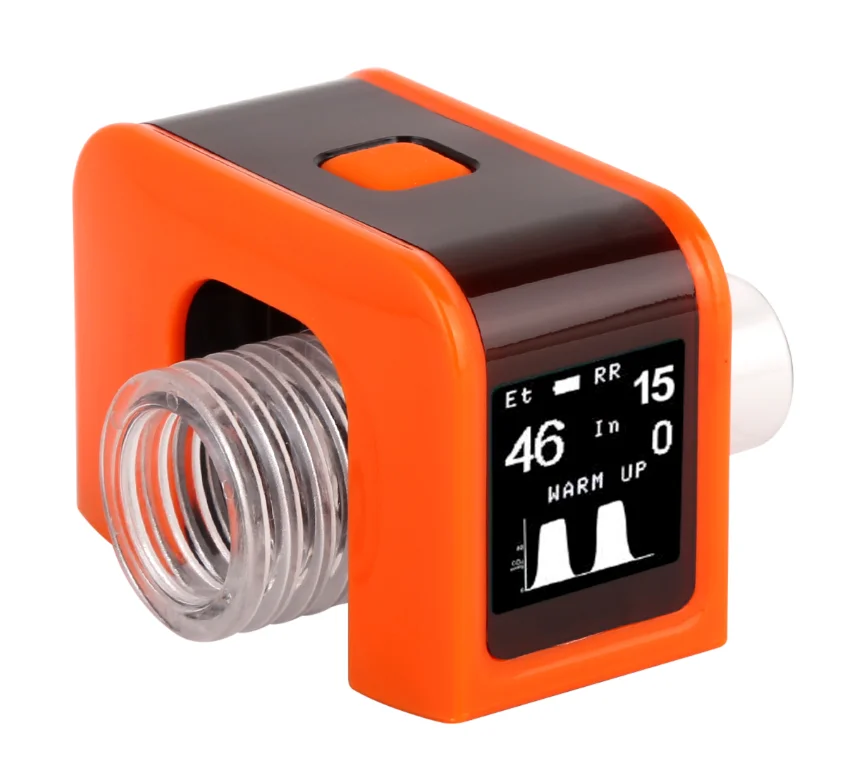
Ca60 Wireless Cpr End Tidal Micro Etco2 Capnometer Buy Etco2 Capnometer Product On Alibaba Com

3 Waveform Capnography Showing Changes In The End Tidal Carbon Dioxide Download Scientific Diagram

3 Waveform Capnography Showing Changes In The End Tidal Carbon Dioxide Download Scientific Diagram
Emdocs Net Emergency Medicine Educationcapnography In The Ed Emdocs Net Emergency Medicine Education
